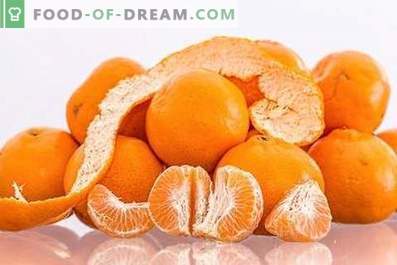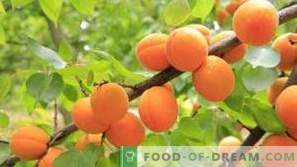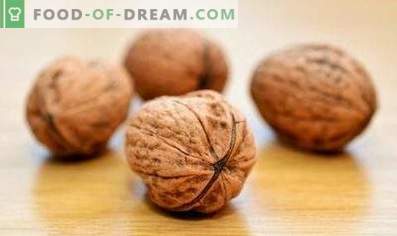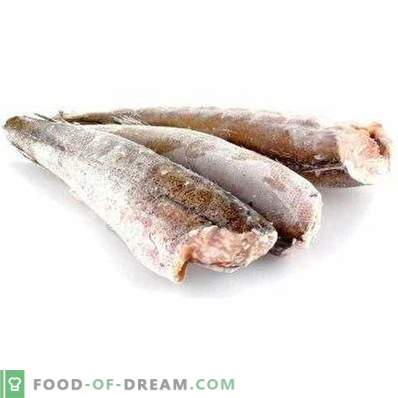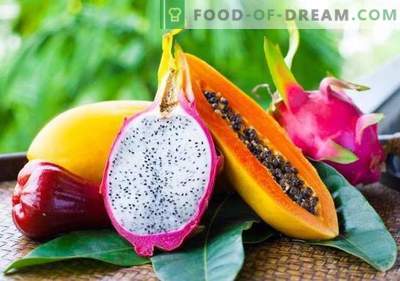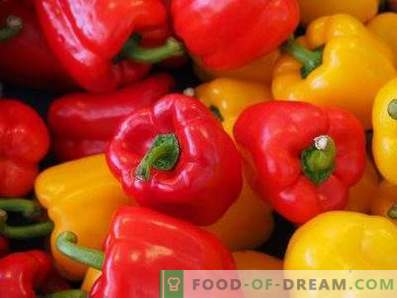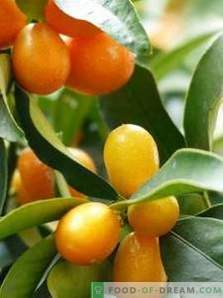
Kumquat is an evergreen from the Kumquat genus of the Ruta family. The Chinese origin of the name of this fruit takes its roots from the phrase “golden mandarin”, which is pronounced “Kam Kuat”. The plant has a widespread Latin name - Fortunella (Fortunella). There is also a version that the name “kumquat” is derived from the Japanese word “kinkan”.
Fortunelle trees, as a rule, are very low and rarely grow above 2 meters. Their trunks have the form of shrubs, and thin shoots are slightly flattened and look like trihedra with small spines or without thorns. In leaves up to 7 cm in length and up to 2, 5 cm in width, thin glands appear through. Behind the leaf bosom is from 1 to 3 white flowers, of which a round fruit of golden orange color with a radius of up to 1, 5 cm with a sweet-sour pulp develops. The fruits of fortunella are similar to small oranges, slightly elongated in length (their length can be up to 5, 2 cm, and the width, as a rule, does not exceed 4, 5 cm). The taste of kumquat is very similar to a little sour mandarin and is completely edible. Kumquat peel is very tasty, but in rare cases it painfully affects the state of the cecum.
The first scientific description of this plant species was created by the Algerian botanist Trabyu.
In nature, you can find different types of fortunella, in which each is characterized by a peculiar form of the fruit. Now kumquat is extremely widely cultivated in its homeland - in southern China. In addition, the countries of Southern Europe, Southeast Asia and the Middle East, as well as Japan and the southern states of the USA (in particular, Florida) are actively involved in importing fruits of Fortunella. Kumquat is rarely grown from seed because of a weak root system. Therefore, for propagation of the tree, a three-leaf poncirus is grafted. Sometimes fortunella is grown in apartments as a houseplant. The use of kumquat is permissible not only raw, but also after making jams, confectionery and liqueurs from it. In Japan, Fortunella is traditionally used at New Year's feasts.
Nutritional Value of Kumquat
The content of vital biological components in Fortunella is very high. Per 100 g of raw kumquat accounts for:
- 1, 79 g of proteins
- 0, 83 g of fats
- 15, 8 g of carbohydrates
- 80, 9 g of water
- 0, 49 g of dry residues
- 6, 7 g of dietary fiber
- 0, 49 g of ash
- 9, 4 g of monosaccharides and disaccharides
- 7, 5 g of sugar
- 0, 12 g of starch
- 0, 104 g of saturated fatty acids
- 0, 156 g of unsaturated fatty acids
- 0, 169 g of polyunsaturated fatty acids
The raw fruits of Fortunella contain a huge amount of essential vitamins that promote health and support the functioning of virtually all body systems.
Vitamin content in 100 g of kumquat:
- 31 μg? -Carotene (A)
- 289 mcg of vitamin A (ER)
- 38 μg of thiamine (B1)
- 90 μg riboflavin (B2)
- 0, 43 mg of vitamin B3
- 0, 209 mg of pantothenic acid (B5)
- 37 μg pyridoxine (B6)
- 21 μg of folic acid
- 44 mg of ascorbic acid (C)
- 0, 16 μg of tocopherol (E)
- 4, 1 μg of biotin (H)
- 0, 43 mg of nicotinic acid (PP)
- 8, 38 mg of choline
- 17, 2 μg of folates
- 0, 425 mg of niacin
Caloric content of various types of kumquat
Although kumquat has a fairly rich vitamin composition, its fruits are characterized by a rather low calorie content. 100 g of fresh fortunella contains only 70 kilocalories. This unique property allows nutritionists to recommend this fruit as a complete healthy fruit for weight loss. In the dried form, kumquat is even less caloric: its energy value is 50 kcal. However, in dried form, fortunella can hold as many as 250 kcal per 100 g of fruit, so it is less suitable for diets. One fruit of fresh kumquat, as a rule, weighs 30-40 g, so it can provide the body with energy in the amount of 21-28 kcal.
Mineral composition of kumquat
In the pulp of the fruit of fortunella can be found many useful macronutrients and trace elements, therefore, this fruit is able to effectively fill the daily need for minerals.
Macroelements in 100 g of Fortunella:
- 63 mg of calcium (Ca)
- 21 mg of magnesium (Mg)
- 20 mg of phosphorus (P)
- 185 mg of potassium (K)
- 11 mg of sodium (Na)
Kumquat fruits also contain almost all the most important trace elements:
- 0, 87 mg of iron (Fe)
- 0, 18 mg of zinc (Zn)
- 0, 096 mg of copper (Cu)
- 0, 137 mg of manganese (Mn)
The pulp of fortunella is rich in various plant nutrients:
- 156 μg of carotene
- 194 mcg of cryptoxanthin
- 130 mcg of lutein-zeaxanthin
Useful properties of kumquat and its use in fresh and dried form
There are approximately six types of exotic healthy fruit, which are characterized by different size and shape from each other. You can also identify about ten artificially created and natural hybrids: Lemonquat, Morgan Kumquat, Ichangquat, Fukushi Kumquat, Orange Quat, etc.
Fortunella is often called the “food of the wise men”, and this is not accidental: it is possible to eat both the flesh and the rind of fruits, and the rich composition of kumquat does not lead to its high caloric content. In dried form, fortunella is often made into an ingredient in dishes such as pastries, pickles, sauces and tinctures. Peel dried kumquat is highly valued for its antibacterial properties. To achieve the best effect, dried peel should be placed near the source of open fire, so that, as a result of evaporation, the essential oils fly out from the surface and fight against harmful bacteria in the air. Often used for inhalation decoctions of dried peel kumquat. Also in this fruit the concentration of furakumarin is very high, contributing to the treatment of fungal infections.
Useful properties of dried kumquat:
- Ability to clear blood vessels from excess cholesterol.
- Saturation of the body with minerals and vitamins.
- Alleviating the effects of drinking (hangover).
- Combating constipation due to the high concentration of dietary fiber.
The healing properties of fresh Fortunella are slightly different from the above, because the concentration of other useful components in the pulp is high:
- Prevention of various problems with the cardiovascular system.
- Combating apathy or stress, improving mood and maintaining tone.
The benefit to the body from the use of dried kumquat is less great, because it does not fully preserve all the healing properties of fresh fruit. Moreover, the receipt of this product is made in a special way: fortunella is dried in a dehydrator or in the sun, and then boiled in sugar syrup. Dried kumquat is dark and shriveled in appearance, but it can serve as an excellent dessert. Also, vitamins A and E in its composition seriously help with the following problems:
- diseases of the eye retina (for example, myopia, night blindness, etc.);
- premature aging;
- the occurrence of lesions on the skin;
- negative influence of sunlight.
Contraindications to the use of kumquat
- Increased acidity in the tissues of the stomach.
- Kidney disease.
- Individual intolerance to this tropical fruit.
Despite the presence of a small number of contraindications, Fortunella is rightly considered one of the most unique diet products.

